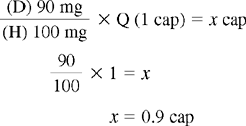CHAPTER 17 After reviewing this chapter, you should be able to: 1. Identify the forms of oral medication 2. Identify the terms on the medication label to be used in calculation of dosages 3. Calculate dosages for oral and liquid medications using ratio and proportion, the formula method, or dimensional analysis 4. Apply principles learned concerning tablet and liquid preparations to obtain a rational answer Tablets are preparations of powdered medications that have been molded into various sizes and shapes. Tablets come in a variety of dosages that can be expressed in metric or apothecary units—for example, milligrams and grains. There are different types of tablets and shapes (Figure 17-1, A). Scored tablets are designed to administer a dosage that is less than what is available in a single tablet. In other words, scored tablets have indentations or markings that allow you to break the tablet into halves or quarters. Only scored tablets should be broken because there is no way to determine the dosage being administered when a nonscored tablet is broken. Breaking a tablet that is not scored could lead to the administration of an inaccurate dosage if the tablet is not divided equally. The purpose of the groove or indentation is to provide a guide for breaking a whole tablet into a fractional part (Figure 17-1, B). Figure 17-2 shows an example of a scored tablet. A pill or tablet cutter is readily available in most pharmacies that can be used to evenly cut tablets appropriately. Figure 17-3 shows a pill/tablet cutter. An appropriate medication reference should always be consulted before cutting a tablet. Many tablets come in a form that allows slow and steady release of the active drug. These forms cannot be cut, crushed, or chewed. Capsules and enteric-coated, timed-release, sustained-release, and controlled-release tablets cannot be cut. Nurses must use caution when instructing clients to cut tablets. Capsules should always be administered whole to achieve the desired result (e.g., sustained release). Sustained-release and timed-release capsules cannot be divided or crushed (Figure 17-5). Always consult an appropriate reference or pharmacist when in doubt as to whether to open a capsule. Examples of medications that come in capsule form are ampicillin, tetracycline, Colace, and Lanoxicaps. Lanoxicaps are an example of a capsule that has liquid medication contained in a gelatin capsule (Figure 17-6, A). On some labels, in addition to capsules, may be seen the term kapseals (e.g., kapseals is seen on a label for Dilantin extended capsules). Although there are other forms of solid preparations for oral administration—such as lozenges and troches—tablets, capsules, and pulvules (proprietary capsules containing a dosage of a medication in powdered form) are the most common forms of solids requiring calculation encountered by the nurse. Figure 17-6 shows forms of solid oral medications, including capsules. Figures 17-6 through 17-8 show various types of capsules and an enteric-coated tablet. Here are at some sample problems calculating the number of tablets or capsules to administer. Order: Ampicillin 0.5 g p.o. q6h Available: Ampicillin capsules labeled 250 mg per capsule 2. After making the necessary conversion, think about what is a reasonable amount to administer. 3. Calculate the dosage to be administered using ratio and proportion, the formula method, or dimensional analysis.
Calculation of Oral Medications
FORMS OF SOLID MEDICATIONS
Tablets
SCORED TABLETS
Capsules
CALCULATING DOSAGES INVOLVING TABLETS AND CAPSULES
Reminders
Example 2:



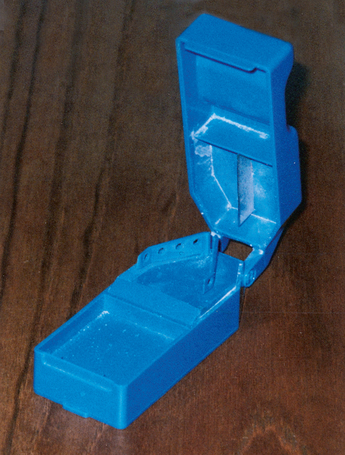



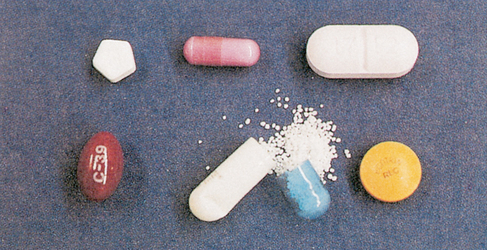

 Problem Setup
Problem Setup Solution Using Ratio and Proportion
Solution Using Ratio and Proportion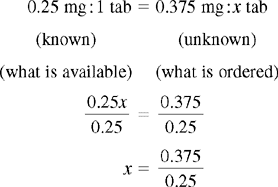


 Solution Using the Formula Method
Solution Using the Formula Method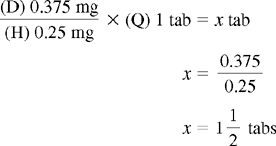
 Solution Using Dimensional Analysis
Solution Using Dimensional Analysis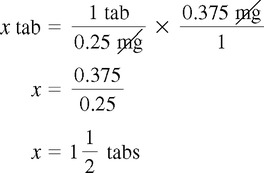
 Problem Setup
Problem Setup

 Solution Using Ratio and Proportion
Solution Using Ratio and Proportion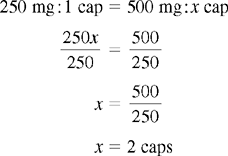
 Solution Using the Formula Method
Solution Using the Formula Method

 Solution Using Dimensional Analysis
Solution Using Dimensional Analysis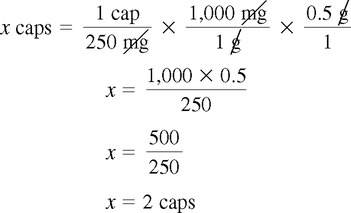

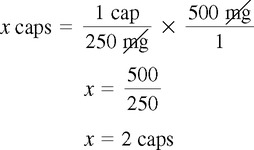
 Problem Setup
Problem Setup
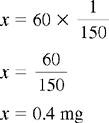
 Solution Using Ratio and Proportion
Solution Using Ratio and Proportion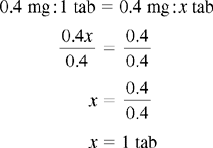
 Solution Using the Formula Method
Solution Using the Formula Method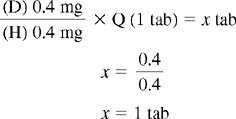
 Solution Using Dimensional Analysis
Solution Using Dimensional Analysis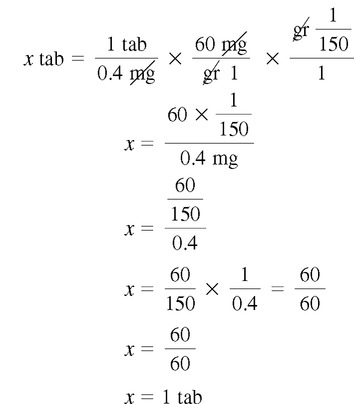
 Problem Setup
Problem Setup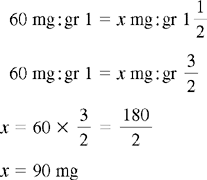

 Solution Using the Formula Method
Solution Using the Formula Method